Object-Oriented Design & Patterns
Cay S. Horstmann
Chapter 6
Inheritance and Abstract Classes
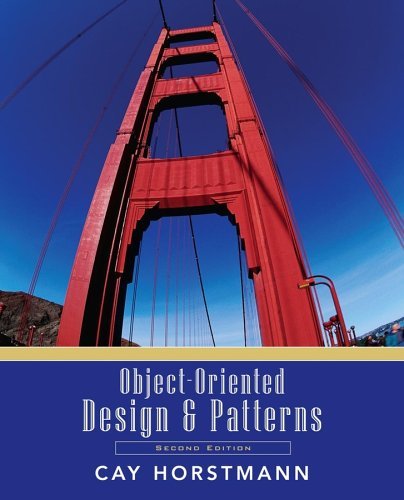
Slide navigation: Forward with space bar, → arrow key, or PgDn. Backwards with ← or PgUp.
Chapter Topics
- The Concept of Inheritance
- Graphics Programming with Inheritance
- Abstract Classes
- The TEMPLATE METHOD Pattern
- Protected Interfaces
- The Hierarchy of Swing Components
- The Hierarchy of Standard Geometrical Shapes
- The Hierarchy of Exception Classes
- When Not to Use Inheritance
Modeling Specialization
Modeling Specialization
Modeling Specialization
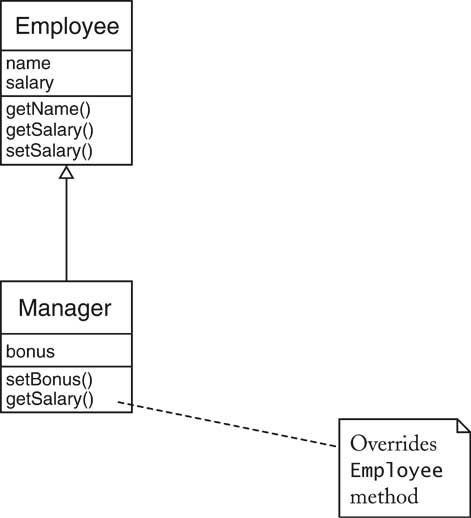
Manager Methods and Fields
- methods
setSalary, getname (inherited from Employee)
- method
getSalary (overridden in Manager)
- method
setBonus (defined in Manager)
- fields
name and salary (defined in Employee)
- field
bonus (defined in Manager)
The Super/Sub Terminology
- Why is
Manager a subclass?
- Isn't a
Manager superior?
- Doesn't a
Manager object have more fields?
- The set of managers is a subset of the set of employees
The Super/Sub Terminology
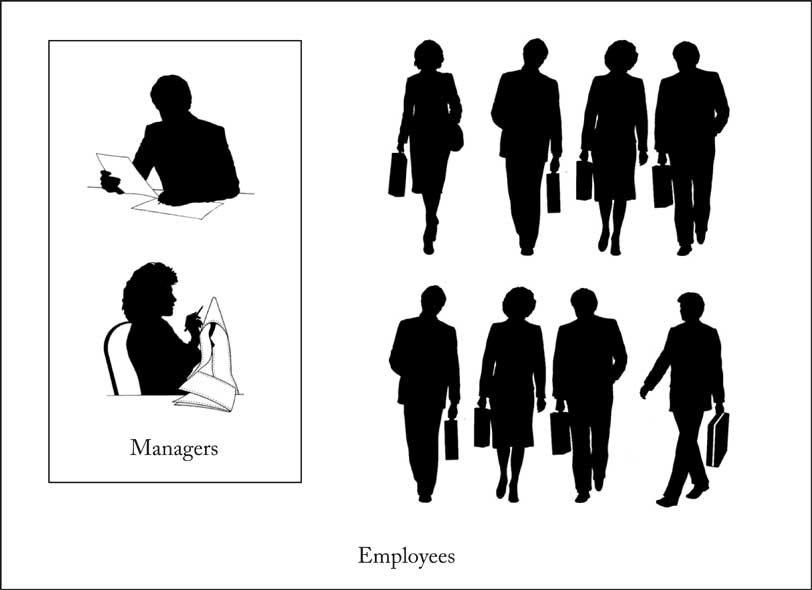
Inheritance Hierarchies
- Real world: Hierarchies describe general/specific relationships
- General concept at root of tree
- More specific concepts are children
- Programming: Inheritance hierarchy
- General superclass at root of tree
- More specific subclasses are children
Inheritance Hierarchies
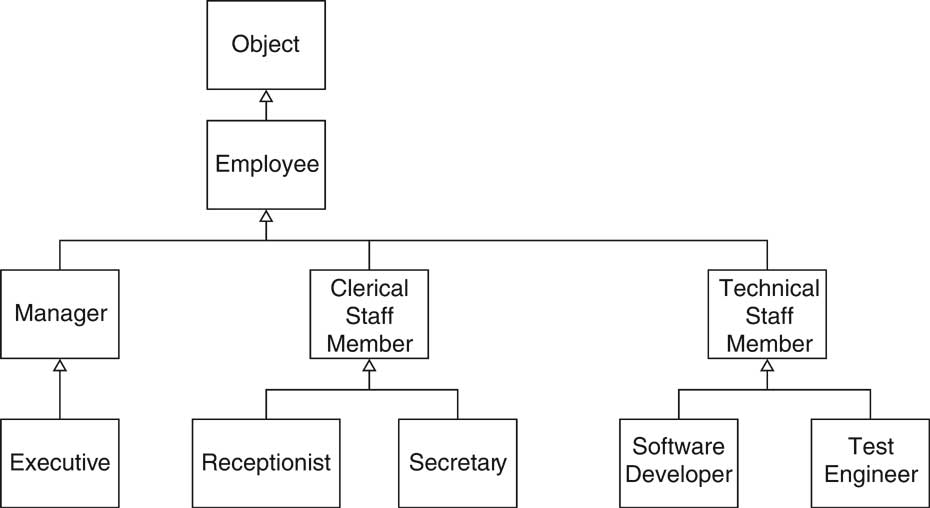
The Substitution Principle
Invoking Superclass Methods
- Can't access private fields of superclass
public class Manager extends Employee
{
public double getSalary()
{
return salary + bonus; // ERROR--private field
}
...
}
- Be careful when calling superclass method
public double getSalary()
{
return getSalary() + bonus; // ERROR--recursive call
}
Invoking Superclass Methods
Invoking Superclass Constructors
Preconditions
- Precondition of redefined method at most as strong
-
public class Employee
{
/**
Sets the employee salary to a given value.
@param aSalary the new salary
@precondition aSalary > 0
*/
public void setSalary(double aSalary) { ... }
}
- Can we redefine
Manager.setSalary with precondition
salary > 100000?
- No--Could be defeated:
Manager m = new Manager();
Employee e = m;
e.setSalary(50000);
Postconditions, Visibility, Exceptions
- Postcondition of redefined method at least as strong
- Example:
Employee.setSalary promises not to decrease salary
- Then
Manager.setSalary must fulfill postcondition
- Redefined method cannot be more
private.
(Common error: omit public when redefining)
- Redefined method cannot throw more checked exceptions
Graphic Programming with Inheritance
Mouse Listeners
Mouse Adapters
- What if you just want to listen to
mousePressed?
- Extend
MouseAdapter
public class MouseAdapter implements MouseListener
{
public void mouseClicked(MouseEvent event) {}
public void mousePressed(MouseEvent event) {}
public void mouseReleased(MouseEvent event) {}
public void mouseEntered(MouseEvent event) {}
public void mouseExited(MouseEvent event) {}
}
- Component constructor adds listener:
private class MousePressedListener extends MouseAdapter
{
{
public void mousePressed(MouseEvent event)
{
mouse action
}
}
}
Car Mover Program
Car Mover Program
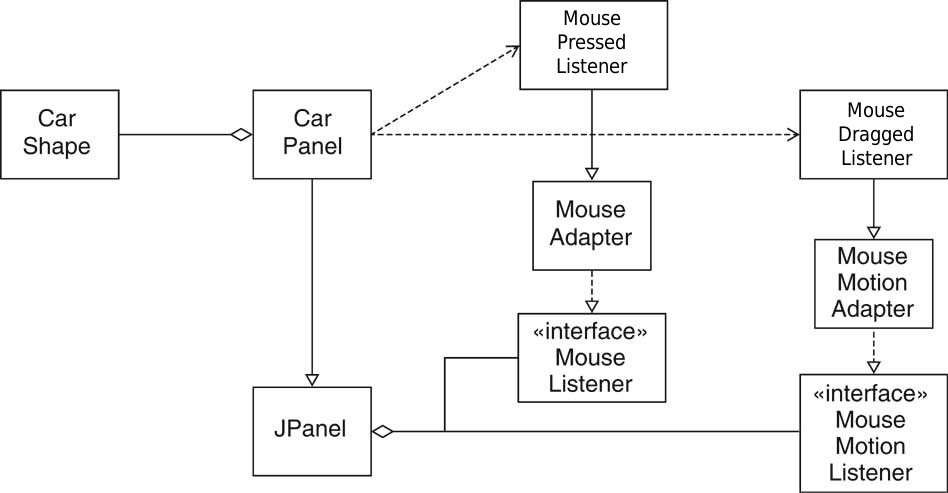
Scene Editor
- Draws various shapes
- User can add, delete, move shapes
- User selects shape with mouse
- Selected shape is highlighted (filled in)
Scene Editor
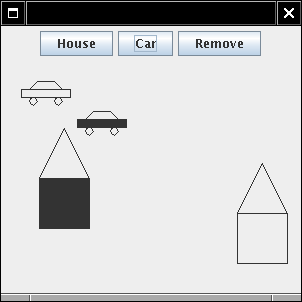
The SceneShape Interface Type
- keep track of selection state
- draw plain or selected shape
- move shape
- hit testing: is a point (e.g. mouse position) inside?
The SceneShape Interface Type
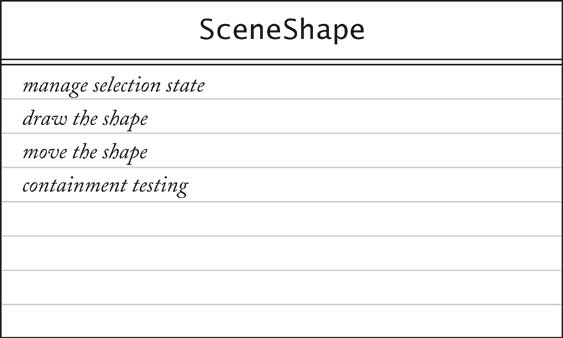
The SceneShape Interface Type
public interface SceneShape
{
void setSelected(boolean b);
boolean isSelected();
void draw(Graphics2D g2);
void drawSelection(Graphics2D g2);
void translate(int dx, int dy);
boolean contains(Point2D aPoint);
}
CarShape and HouseShape Classes
public class CarShape implements SceneShape
{
...
public void setSelected(boolean b) { selected = b; }
public boolean isSelected() { return selected; }
private boolean selected;
}
public class HouseShape implements SceneShape
{
...
public void setSelected(boolean b) { selected = b; }
public boolean isSelected() { return selected; }
private boolean selected;
}
Abstract Classes
- Factor out common behavior
(
setSelected, isSelected)
- Subclasses inherit common behavior
- Some methods still undefined
(
draw, drawSelection, translate, contains)
public class SelectableShape implements SceneShape
{
public void setSelected(boolean b) { selected = b; }
public boolean isSelected() { return selected; }
private boolean selected;
}
Abstract Classes
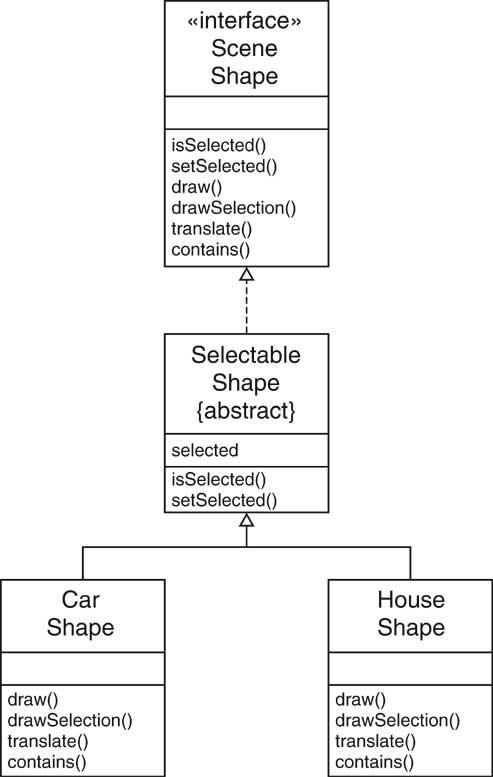
Abstract Classes
Abstract Classes and Interface Types
- Abstract classes can have fields
- Interface types can only have constants (
public static final)
- Abstract classes can define methods
- Interface types can only declare methods
- A class can implement any number of interface types
- In Java, a class can extend only one other class
Scene Editor
Uniform Highlighting Technique
- Old approach: each shape draws its selection state
- Inconsistent
- Better approach: shift, draw, shift, draw, restore to original position
- Define in
SelectableShape
public void drawSelection(Graphics2D g2)
{
translate(1, 1);
draw(g2);
translate(1, 1);
draw(g2);
translate(-2, -2);
}
Uniform Highlighting Technique
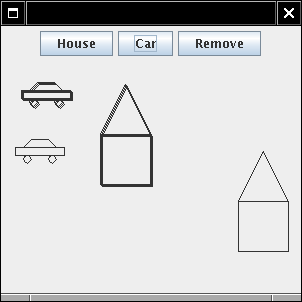
Template Method
drawSelection calls draw- Must declare
draw in SelectableShape
- No implementation at that level!
- Declare as abstract method
public abstract void draw(Graphics2D g2)
- Defined in
CarShape, HouseShape
drawSelection method calls draw, translatedrawSelection doesn't know which methods--polymorphismdrawSelection is a template method- ch06/scene2/SelectableShape.java
- ch06/scene2/HouseShape.java
TEMPLATE METHOD Pattern
Context
- An algorithm is applicable for multiple types.
- The algorithm can be broken down into primitive operations. The primitive operations can be different for each type
- The order of the primitive operations doesn't depend on the type
TEMPLATE METHOD Pattern
Solution
- Define a superclass that has a method for the algorithm and abstract methods for the primitive operations.
- Implement the algorithm to call the primitive operations in the appropriate order.
- Do not define the primitive operations in the superclass, or define them to have appropriate default behavior.
- Each subclass defines the primitive operations but not the algorithm.
TEMPLATE METHOD Pattern
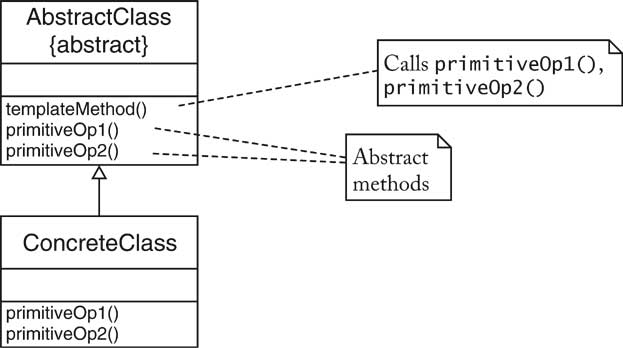
TEMPLATE METHOD Pattern
| Name in Design Pattern
|
Actual Name (Selectable shapes)
|
AbstractClass
|
SelectableShape
|
ConcreteClass
|
CarShape, HouseShape
|
templateMethod()
|
drawSelection
|
primitiveOp1(), primitiveOp2()
|
translate, draw
|
Compound Shapes
Compound Shapes

Access to Superclass Features
Protected Access
- Make
CompoundShape.add method protected
- Protects
HouseShape: other classes can't add graffiti
- Protected features can be accessed by subclass methods...
- ...and by methods in the same package
- Bad idea to make fields protected
protected GeneralPath path; // DON'T
- Ok to make methods protected
protected void add(Shape s) // GOOD
- Protected interface separate from public interface
Hierarchy of Swing Components
Hierarchy of Swing Components
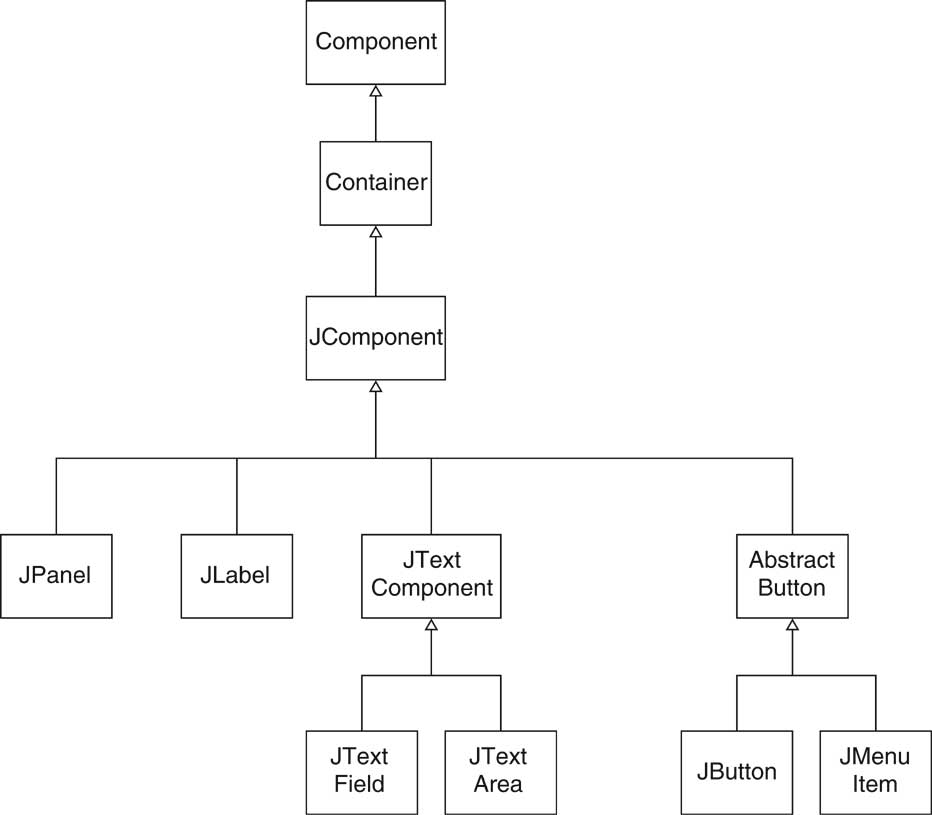
Hierarchy of Swing Components
- History: First came AWT, Abstract Window Toolkit
- Used native components
- Subtle platform inconsistencies
- Write once, run anywhere ->
Write once, debug everywhere
- Swing paints components onto blank windows
- Supports multiple look and feel implementations
Look and Feel
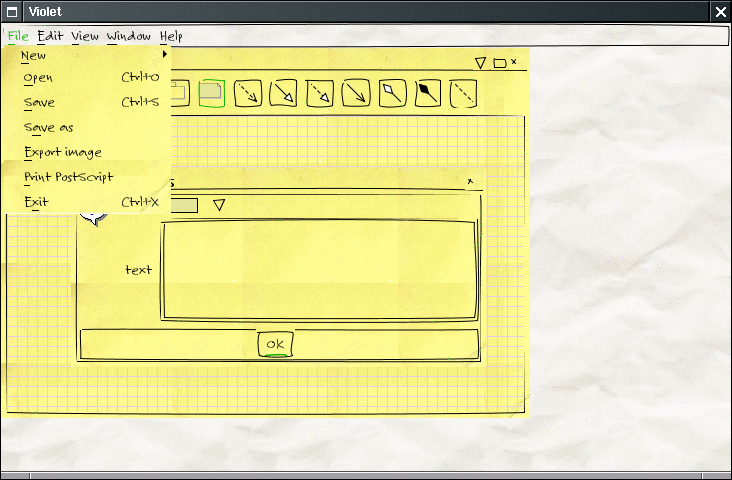
Hierarchy of Swing Components
- Base of Swing components:
JComponent
- Subclass of
Container
- Some Swing components are containers
- Java has no multiple inheritance
JLabel, JButton, ... are subclasses of JComponent- Intermediate classes
AbstractButton, JTextComponent
Hierarchy of Geometrical Shapes
Hierarchy of Geometrical Shapes
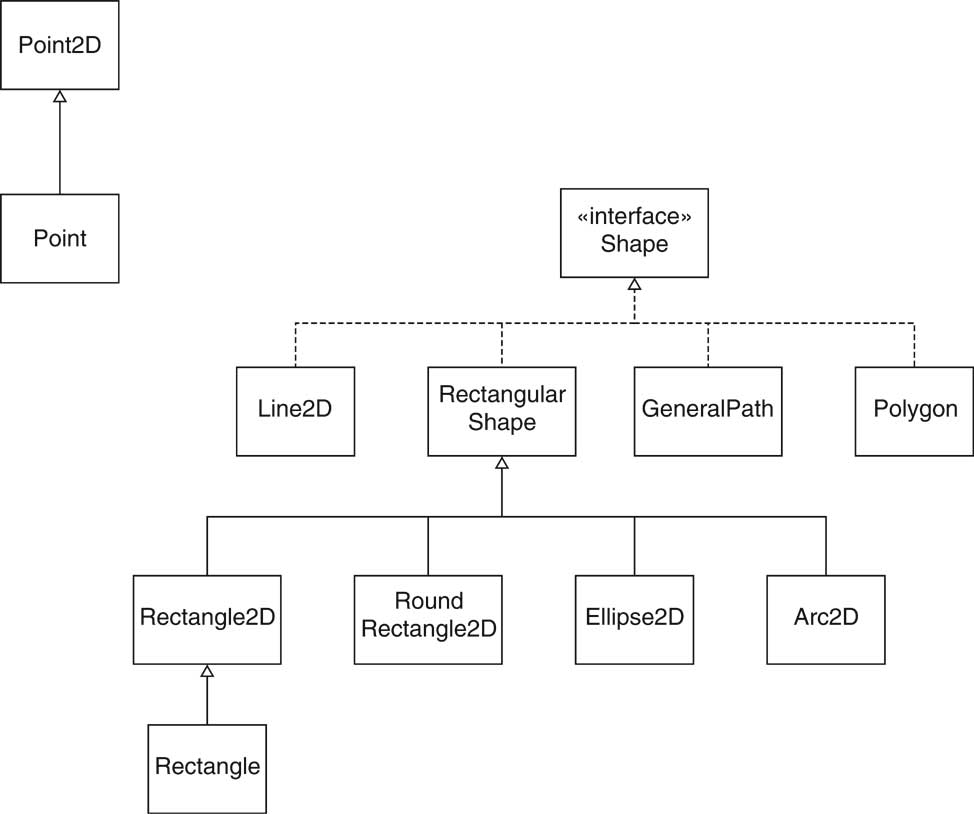
Rectangular Shapes
Float/Double Classes
Float/Double Classes
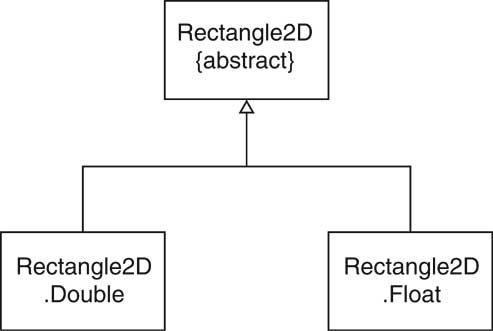
Float/Double Classes
public class Rectangle2D
{
public static class Float extends Rectangle2D
{
public double getX() { return x; }
public double getY() { return y; }
public double getWidth() { return width; }
public double getHeight() { return height;}
public void setRect(float x, float y, float w, float h)
{
this.x = x; this.y = y;
this.width = w; this.height = h;
}
public void setRect(double x, double y,
double w, double h)
{
this.x = (float)x; this.y = (float)y;
this.width = (float)w; this.height = (float)h;
}
...
public float x;
public float y;
public float width;
public float height;
}
. . .
Float/Double Classes
. . .
public static class Double extends Rectangle2D
{
public double getX() { return x; }
public double getY() { return y; }
public double getWidth() { return width; }
public double getHeight() { return height;}
public void setRect(double x, double y,
double w, double h)
{
this.x = x; this.y = y;
this.width = w; this.height = h;
}
...
public double x;
public double y;
public double width;
public double height;
}
...
}
Float/Double Classes
Rectangle2D class has no instance variables- Template Method Pattern at work:
public boolean contains(double x, double y)
{
double x0 = getX();
double y0 = getY();
return x >= x0 && y >= y0 &&
x < x0 + getWidth() &&
y < y0 + getHeight();
}
- No need to use inner class after construction
Rectangle2D rect
= new Rectangle2D.Double(5, 10, 20, 30);
TEMPLATE METHOD Pattern
| Name in Design Pattern
|
Actual Name (Rectangles)
|
AbstractClass
|
Rectangle
|
ConcreteClass
|
Rectangle2D.Double
|
templateMethod()
|
contains
|
primitiveOpn()
|
getX, getY, getWidth, getHeight |
Hierarchy of Exception Classes
- Base of hierarchy:
Throwable
- Two subclasses:
Error, Exception
- Subclasses of
Error: fatal
(out of memory, assertion failure)
- Subclasses of
Exception:
-
- Lots of checked exceptions
(I/O, class not found)
RuntimeException—its subclasses are unchecked
(null pointer, index out of bounds)
Hierarchy of Exception Classes
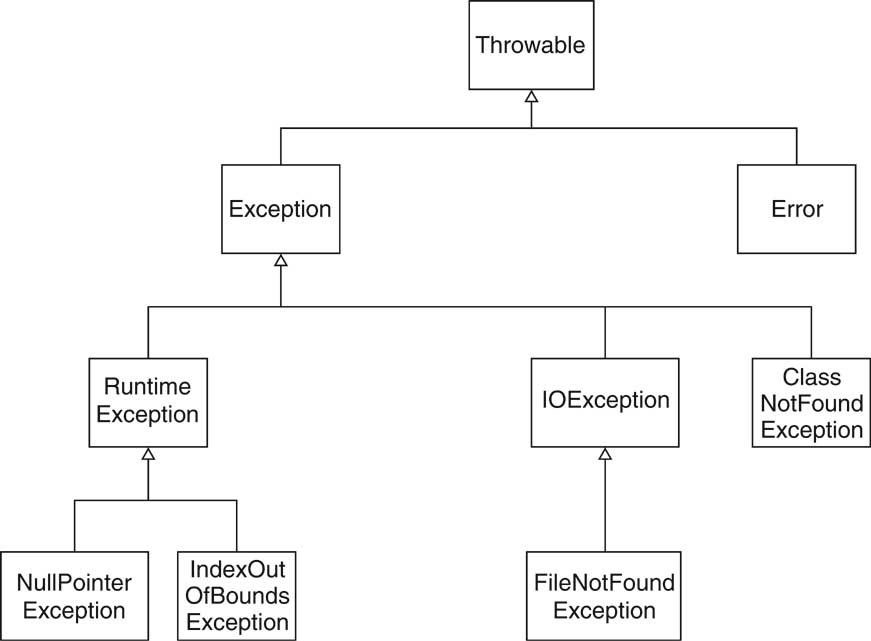
Catching Exceptions
Defining Exception Classes
When Not to Use Inheritance
- From a tutorial for a C++ compiler:
public class Point
{
public Point(int anX, int aY) { ... }
public void translate(int dx, int dy) { ... }
private int x;
private int y;
}
public class Circle extends Point // DON'T
{
public Circle(Point center, int radius) { ... }
public void draw(Graphics g) { ... }
private int radius;
}
When Not to Use Inheritance
- Huh? A circle isn't a point.
- By accident, inherited
translate works for circles
- Same tutorial makes
Rectangle a subclass of Point:
public class Rectangle extends Point // DON'T
{
public Rectangle(Point corner1, Point corner2) { ... }
public void draw(Graphics g) { ... }
public void translate(int dx, int dy) { ... }
private Point other;
}
When Not to Use Inheritance
When Not to Use Inheritance















